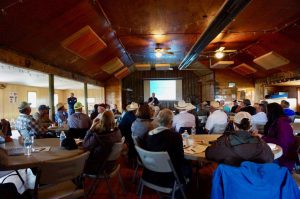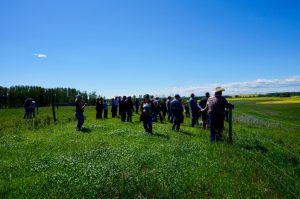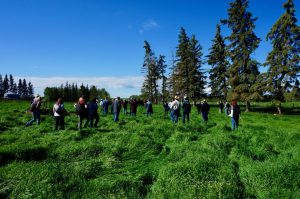…where the jobs come looking for you, not the other way round.
In his lab in the Faculty of Agriculture, Life and Environmental Sciences at UAlberta, Paul Stothard and his students pore over their computers and monitors. Stothard is a bioinformatician; that is, he uses computers and software to analyze DNA and protein sequences and to connect them to traits of interest or mutations that could have beneficial effects.
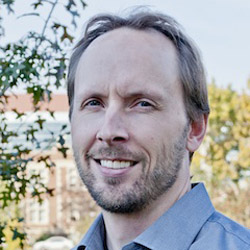
Typically, bioinformatics “starts” after somebody has generated enormous amounts of ACGT letters (the sequence), recorded them in a giant text file, and handed the file over. Stothard then has to manage these huge datasets so that the data are stored safely yet accessible to others in an organized way.
To do this, Stothard relies on powerful computing resources. The innocuous-looking screens and computers in the lab are just the interface that connects to a remote hive of computer clusters that have tens of thousands of processors and thousands of terabytes of storage. Then there’s the software…. Stothard and his team do a lot of computer programming.
“A lab might get a new device for measuring gene expression that produces different data,” he explains. “We simply can’t rely on—or wait for—commercial software packages to follow so we create our own. We publish the code, and it becomes open source for others to build on.”
And that, as they say, is where it all began. Stothard’s background is in molecular genetics. It’s as he was working in the lab, studying how an embryo nematode decides to develop into a male or female, that he realized the tools were inadequate.
“I started writing my own software. I enjoyed it, and people started asking if they could use it, too. I decided to do a post-doc in David Wishart’s lab in Computing Science, where I could really focus on that.”
Bioinformatics is one of the fastest-evolving fields around. One exciting direction it is taking relates to how DNA is sequenced. Currently, when the sequences arrive from the lab, the data are in billions of small pieces of about 300 nucleotides (the letters) long. Stothard and his team have to stitch them back together into whole chromosomes. It’s not that much fun.
“Thank goodness ultra-long read technologies are on the horizon,” he says. “We may one day get entire chromosomes as single reads. We’ll be able to catch differences between individuals that we can’t see now because of the breaks.”
As well, the cost of sequencing will continue to fall so that, in a few years, hundreds of thousands of individual people, cattle, pigs, plants can be sequenced. That will provide more enormous datasets to work from.
In practical terms, any trait that can be improved through breeding can be addressed using bioinformatics. Essentially it leads to faster genetic improvement and can lead to new diagnostics. Stothard and his team are working on a variety of projects. One is a mutation in Dalmatians and Bedlington terriers that causes copper toxicosis. Finding the mutation could lead to a DNA test, and breeders would know which dogs to avoid breeding. A similar test would have been extremely useful in the last 20 years when hip dysplasia was accidentally bred into German shepherd dogs. Everybody is familiar with those consequences.
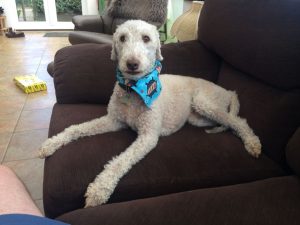
Gentec’s Chief Executive Dog (ie; belonging to CEO Graham Plastow) is a Bedlington.
In livestock, bioinformatics can help identify which animals are more feed-efficient than others, more disease-resistant or even the breed history. All lead to higher profit margins for producers. Disease-resistance also has implications for better animal welfare.
“If anybody is interested in a career in bioinformatics, now is the time,” says Stothard. “Research groups are drowning in data. They have a real need for people who can manage and analyze large DNA sequence datasets. And industry as well. My students have gone on to work in companies developing drugs, tools for animal breeding and even for software companies. There are openings from the Master’s to the post-doc level. As long as the candidate can demonstrate computer programming skills (not necessarily a degree).”
His own team is stretched to capacity. “I have way more projects than time to do them,” he says.
In the fairly near future Stothard will be looking to hire another bioinformatician for his team who can provide assistance to multiple researchers and isn’t tied to any given project. One of the first places he’ll look is: https://bioinformatics.ca/job-postings/. If this is a career that might interest you, it’s a good place to start.



